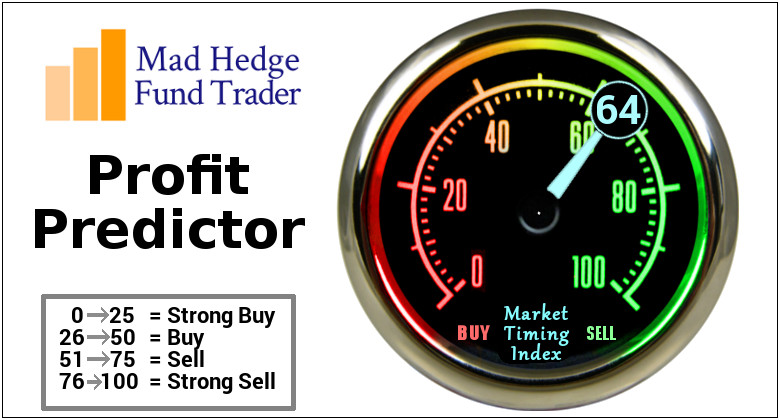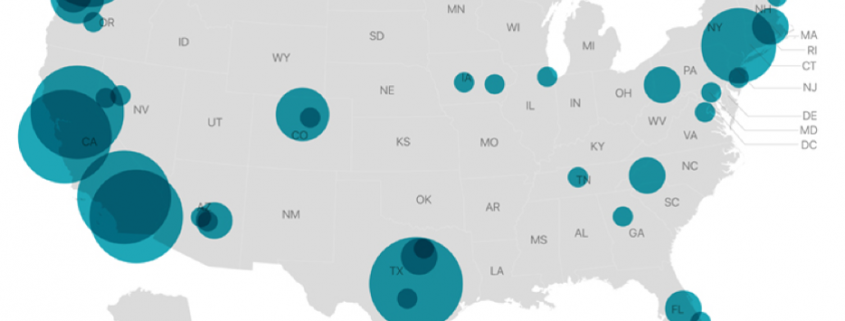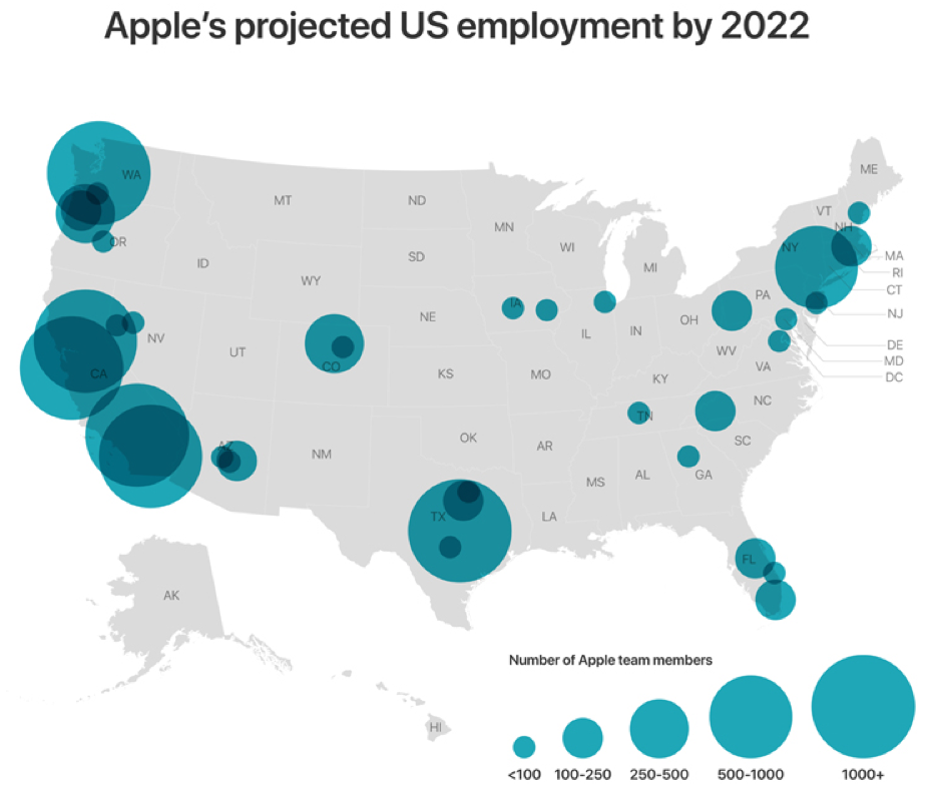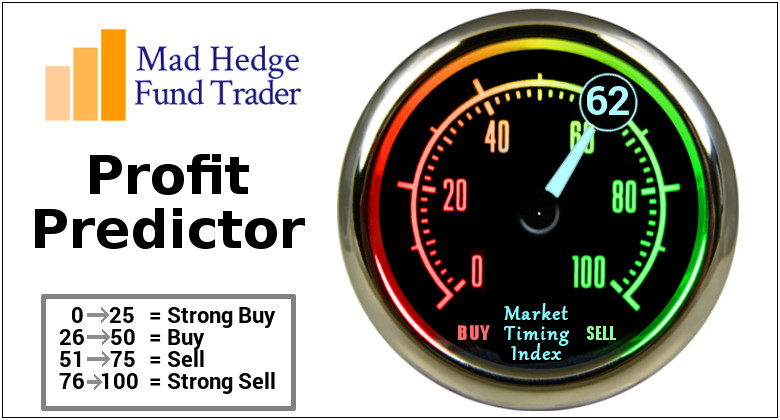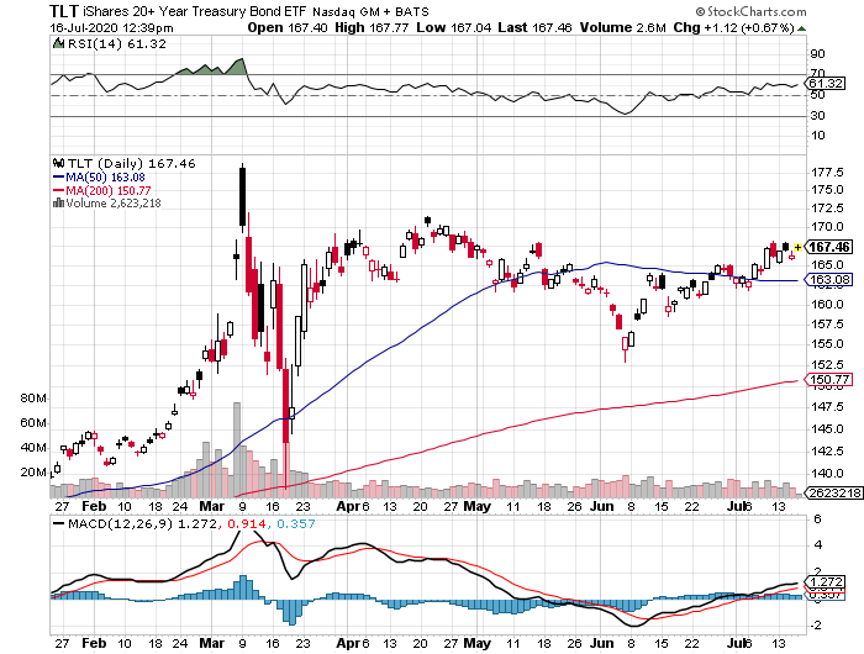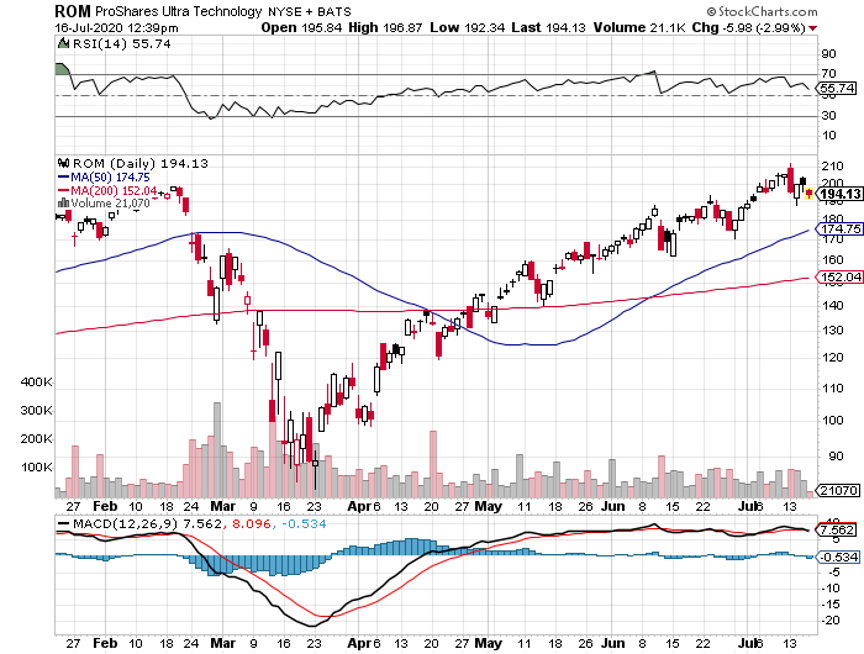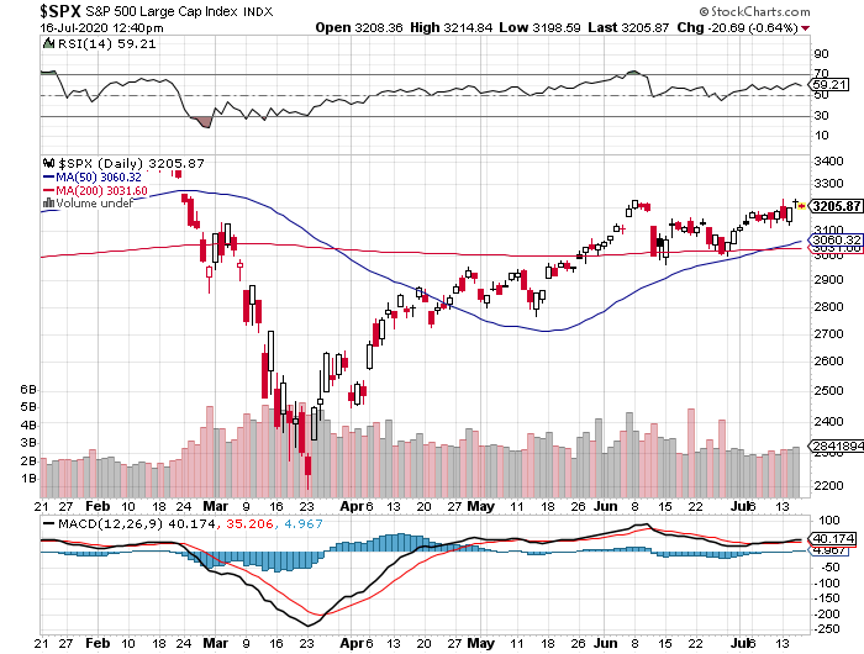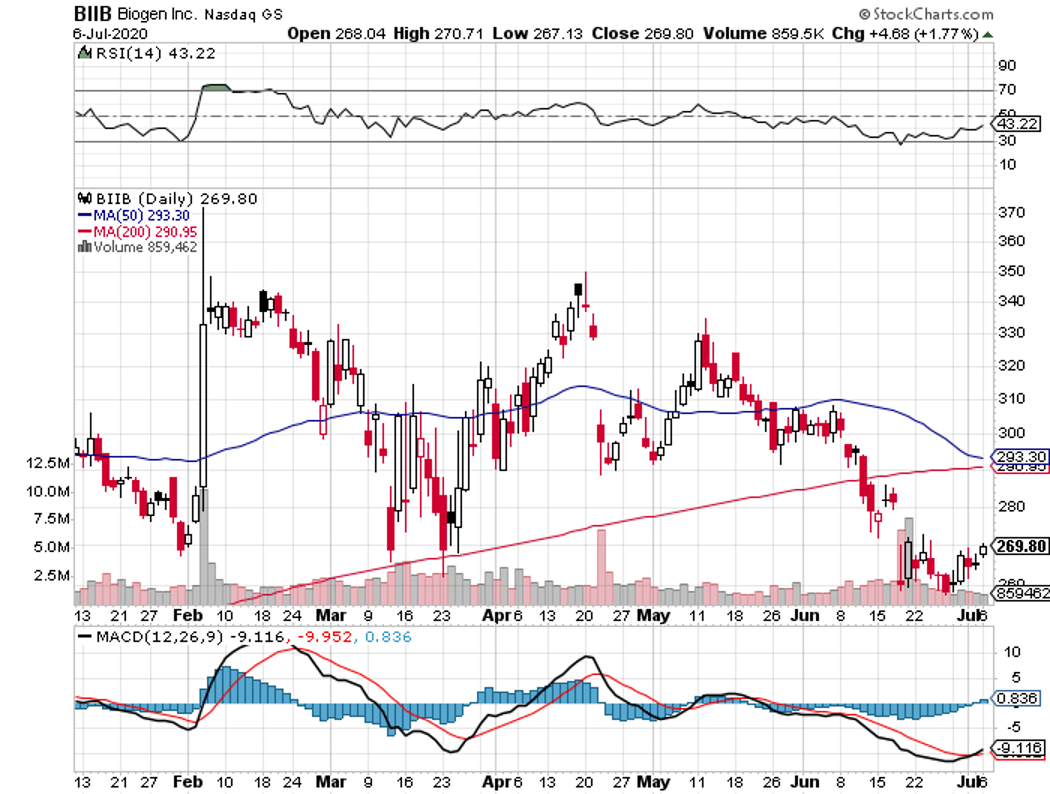When John identifies a strategic exit point, he will send you an alert with specific trade information as to what security to sell, when to sell it, and at what price. Most often, it will be to TAKE PROFITS, but, on rare occasions, it will be to exercise a STOP LOSS at a predetermined price to adhere to strict risk management discipline. Read more
Mad Hedge Technology Letter
July 17, 2020
Fiat Lux
Featured Trade:
(THE ROAD OUT OF SILICON VALLEY),
(AAPL), (CRM), (MSFT), (FB), (AMZN), (GOOGL)
In a study last year, 44% of Millennials planned to move out of the Bay Area in the “next few years.”
In the same study, 8% of Millennials indicated that they would move out of the Bay Area within the next 365 days.
Then Covid-19 hit.
The pandemic has accelerated this trend of Millennials ditching big-ticket cities and rental prices in San Francisco have experienced 30% drops with many owners offering free two months upon move in to salvage a souring situation.
The U.S. has also moved to ban foreign HB-1 visas citing the 40 million unemployed American citizens that are now looking for a job.
The knock-on effect is a wave of Indian and Chinese tech workers, who are usually the recipients of the HB-1 visas, that won’t be renting Silicon Valley apartments at inflated market prices.
The migratory trends sum it all up and the Bay Area has finally hit that inflection point where it is no longer the most desirable place to live anymore.
On a social level, the area has also become squalid like some third world countries due to a ravaging homeless problem that is growing faster than any software company.
The pandemic forced the local city government to create a tent encampment in front of San Francisco city hall.
The ones that weren’t gifted a spot in front of city hall were temporarily put up in five-star hotels in Russian Hill and paid by for the city because of the absence of any travelers.
Salesforce Founder and CEO Marc Benioff has lamented that San Francisco, where ironically he is from, is a diabolical “train wreck” and urged fellow tech CEOs to “walk down the street” and see it with their own eyes to observe the corrosion of society.
The leader of Salesforce doesn’t mince his words when he talks and beelines to the heart of the issues.
Sadly, the pandemic will put more pressure on the lower end of society and force more Americans into homelessness adding to the surge.
How many homeless can San Francisco absorb?
It’s scary to think about what will happen when the eviction moratorium ends and extended unemployment benefits stop.
It’s just another factor in a long list of why San Francisco is losing talent.
The environment has really turned from day to night in Silicon Valley where just a half a year ago, Silicon Valley was overflowing with tech jobs and now start-ups are shedding jobs faster than ever.
Uber, Lyft, and Google are just some that have rescinded job offers to new graduates, frozen salaries, slashed annual bonuses, and straight-up laid-off employees.
The trend of outsourcing tech jobs from California was already well underway before the pandemic.
That was exactly what Apple’s $1 billion investment into a new tech campus in Austin, Texas and Amazon adding 500 employees in Nashville, Tennessee is all about.
Apple also added numbers in San Diego, Atlanta, Culver City, and Boulder just to name a few.
Apple currently employs 90,000 people in 50 states and is in the works to create 20,000 more jobs in the US by 2023.
Most of these new jobs won’t be in Silicon Valley but is it possible that the pace of new hires will get bogged down because of the health crisis.
Millennials are reaching that age of family formation and they are fleeing to places that are affordable and possible to take the first step onto the property ladder.
The health crisis has crushed many of their dreams to become a first-time homebuyer, meaning they could become lifelong renters.
Millennials came of age during 9-11, graduated into the Great Recession of 2008, and have now been dealt a cruel and devastating blow of navigating through Covid-19 during many of their best years of income earning.
No wonder why Silicon real estate has dropped, people and their paychecks are on the way out.
In a perfect storm of a health crisis, economic crisis, and the desire to live in more physical space as most jobs become remote, San Francisco has never been less attractive at any point in time.
It will no longer be the economic juggernaut that was so vital to tech companies.
Silicon Valley simply doesn’t share the wealth with all of its participants and the place is now feeling the side effects.
The last time San Francisco was this unattractive, you would have to go back to before the California Gold Rush of 1848 when San Francisco was just a backwater village of 10,000 people.
When hiring comes back, look for many of the second-tier cities like Nashville to recover fast taking off from what Silicon Valley built.
Just as harrowing as the health crisis, the start of wildfire season has just commenced in the state of California.
It used to be such a great place to live.
“I strongly believe the business of a business is to improve the world.” – Said Founder and Co-CEO of Salesforce Marc Benioff
While the Diary of a Mad Hedge Fund Trader focuses on investment over a one week to a six-month time frame, Mad Day Trader, provided by Bill Davis, will exploit money-making opportunities over a brief ten minute to three-day window. It is ideally suited for day traders, but can also be used by long-term investors to improve market timing for entry and exit points. Read more
Global Market Comments
July 17, 2020
Fiat Lux
Featured Trade:
(JULY 15 BIWEEKLY STRATEGY WEBINAR Q&A),
(EEM), (GLD), (GDX), (NEM), (GOLD), (UUP), (FXA), (FXE), (FXY), (AMZN), (AAPL), (GOOGL), (FB), (BIDU), (TLT), (TBT), (IBB), (ROM)
Below please find subscribers’ Q&A for the July 15 Mad Hedge Fund Trader Global Strategy Webinar broadcast from Lake Tahoe, NV with my guest and co-host Bill Davis of the Mad Day Trader. Keep those questions coming!
Q: Do you expect foreign equities to begin to outperform US equities sometime soon?
A: I expect them to outperform imminently simply because Europe did their shutdown properly, a total shutdown, and got rid of the virus, so their economy and schools are opening. We did a partial shutdown, some states did not shut down at all, and as a result, the epidemic is on fire here, and our shutdown will have to last an extra six months to a year. So that means you’ll probably want to be rotating out of US stocks and into emerging stocks, and the (EEM) is the ETF to go with there.
Q: Would you buy gold LEAPS at this point?
A: Normally, I say only buy LEAPS on capitulation selloffs like we had in March. We actually put out 25 LEAP recommendations on the long side in tech and biotech in March and they all proved spectacular winners. However, at this point, gold is just short of an all-time high; if you break the high you could get a $500 or $1,000 move very quickly to the upside. If you want to do LEAPS, I would go out one year, I would go fairly close to the money, something like a $200-$210 LEAP in the (GLD) ETF. Your much bigger bang, by the way, would be to do LEAPS on the individual stocks; go 10% or 20% out of the money, you might make 100%-200% on those and the stocks to do there would be Newmont Mining (NEM) and Barrick Gold (GOLD).
Q: Would the US or any other country consider backing their currency with gold?
A: Absolutely not. We went off the gold standard in 1972 for a reason. That’s because they're not making it anymore; there isn't enough gold to support growth in a global economy. On the other hand, a supply of paper is unlimited, and that's why we've had such terrific economic growth since we’ve gone off the gold standard.
Q: I’m seeing some really great deals in energy. Should I get involved?
A: Absolutely not. Don’t confuse “gone down a lot” with “cheap.” We think the oil business is long term going out of business. It can't compete with alternatives and electric cars; the economics for investing in a non-scalable energy form just are not there. It’s like asking an analog adding machine to compete with a computer.
Q: Is it too late to sell the US dollar or the Invesco DB US Dollar Index Bullish Fund ETF (UUP)?
A: No, we’re only in the very early stages of the collapse of the US dollar, so you want to be buying all of the nondollar ETFs like the Australian dollar (FXA), the euro (FXE), and the Japanese yen (FXY). Massive over issuance of currency will destroy its value, that’s one of the seminal lessons of currency markets. The US is not immune to that.
Q: Biotech is getting overheated here—should I buy the rumor, sell the news?
A: We’re also just in the opening stages of the biotech golden age. Even if they cure corona tomorrow, there are another 100 diseases they will cure over the next 10 years using all of the new advanced technology that has just been developed, like gene editing, monoclonal antibodies, and quantum computers. It’s another reason to subscribe to the Mad Hedge Biotech and Healthcare Letter for $1,500 a year (click here).
Q: I see Bill Gross is bullish on value stocks—would you go with that view?
A: No, leave the value stocks for Bill Gross. He's semi-retired and hasn’t been as good on the stock market lately as he used to be, as much as he is a dear friend. This is a chasing-a-winner type market. I would wait for value stocks. You could die a long horrible death by the time value stocks turn around so I would avoid them. Go for earnings growth, that’s the only thing that counts in the future.
Q: What would you recommend as a portfolio starter?
A: I would recommend 100% cash. I know you don’t want to hear that you should keep cash if you just bought an expensive trade alert service, but the fact is the risk now is the highest it’s been in years. I only add new trade at market sweet spots, and you don’t get those every day of the year. I will send you an alert if I see a low-risk high-return trade. Wait for the summer correction—that will set up another bet-the-ranch opportunity. Don’t worry about trade alerts, we’ll be doing about 400 of them this year, but they do tend to come in bunches at market bottoms and market tops.
Q: Do American companies have much of a chance against Chinese tech?
A: The US has an overwhelming lead, which will probably increase at an exponential rate. I think the threat of Chinese tech is vastly overstated by the administration. They needed an enemy to protect us from to stick around. The reality is that the US is so far ahead it’s unbelievable; that’s the reason they steal our technology. And they only have leads in very specific areas, such as surveillance of large populations. I wouldn’t worry too much about tech—if the Chinese really had a lead on tech, would Amazon (AMZN), Apple (AAPL), Alphabet (GOOGL), Facebook (FB) all be going to new highs every day, while Baidu (BIDU) lagged?
Q: Should we close out the Regeneron call spread?
A: At this point, we’re so far in the money I would just wait two more days and it will expire at its maximum $10 value, and you can avoid all the fees. You’ll end up making $1,600 or 16.28% 15 trading days.
Q: Presidential candidate Joe Biden has just had a huge surge in the polls in battleground states. Will he be damaging to the market?
A: No, ever since he started his rise in the polls, the stock market has been rising almost every day, and that’s even after announcing in advance that he’s going to raise corporate taxes from 21% to 28%. He’s also going to eliminate the carried interest, which should have been eliminated a long time ago. I imagine there will be some super punitive Roosevelt style 90% tax on net taxable income over a billion dollars—a real billionaire’s punishment tax, as they’ve basically made all the money for the last 30 years. The stock market is voting with confidence for the future Biden government, who am I to disagree? The market is always right.
Q: Will gold hit a new high?
A: Yes, I think we will have a new high in a couple of weeks. That's why I said it’s a rare case when you actually buy LEAPS in a rising market, especially if you go one or two years out. Guess where gold will be in two years? My bet is $3,000, so a $200/$210 LEAP in the (GLD) could bring in a 1,000% return, The overwhelming fundamentals are in favor of gold. I'll keep hammering away at that in the newsletter.
Q: I only trade stocks; how can I take advantage of your recommendations?
A: First of all, buy the stocks. Second, you can buy stocks on margin, which gives you double exposure. Third, there are many 2X ETFs on the stocks or sectors we recommend, like the (TBT), which you can also trade in a stock account. For example, for biotech, you can get your exposure there through the (IBB), and through tech, you can buy the 2X (ROM); but I wouldn’t buy it today because it is too high. In fact, only about 25% of our followers do options, the rest trade stocks or use it to manage their own long-term portfolios.
Q: Will we hit 0% yielding US Treasuries (TLT)?
A: Probably not, that move is behind us. We got down to a 31 basis points yield at the lows. Now, massive oversupply from the US government will be the primary factor dictating Treasury prices, and that means going down a lot.
Good Luck and Stay Healthy
John Thomas
CEO & Publisher
The Diary of a Mad Hedge Fund Trader
I would like to make a suggestion on a debit spread and the stock is Zendesk, Inc. (ZEN).
ZEN is trading around $88.15 as I write this.
My suggestion is to trade the August monthly options that expire on August 21st.
This gives the stock about two weeks to make a move.
Here is how you open the position:
Buy to Open August 21st - $87.50 Call for $6.10
Sell to Open August 21st - $92.50 Call for $4.00
The net debit will be $2.10 per spread.
Based on the tracking portfolio, I suggest you limit the trade to a 6 lot or 1.2% of the portfolio.
The maximum gain on a six lot would be $1,450.
Mad Hedge Biotech & Healthcare Letter
July 16, 2020
Fiat Lux
Featured Trade:
(BIOGEN’S LONG TERM UPSWING HAS BEGUN),
(BIIB), (SGMO), (RHHBY)
Biogen (BIIB) is a stock that perfectly fits the biotechnology mold.
Over the past 5 years, this Massachusetts-based company was down for roughly 25%. Five years before that though, Biogen stock catapulted 700%. A decade or so prior that, the company’s performance was flat, with a couple of extreme swings now and then.
However, the next decade could see Biogen stocks going upswing once again.
In the past 20 years, the biotechnology and healthcare sectors have been obsessed with finding a cure for cancer. With over 1.8 million fresh cases diagnosed every year, it’s understandable why the oncology space has received the most attention over the years.
Apart from cancer, companies have also made significant progress in other pressing issues like infectious diseases and cardiovascular disorders.
Now, a new market is starting to demand attention as well: the neuroscience field.
With all the demands for treatments for other diseases though, companies pulled R&D dollars away from the neuroscience budget and poured those into less risky efforts.
In comparison, Biogen doubled down spending on its neurology research.
In fact, the company has spent over $10 billion in this sector in the last 5 years. This amounts to roughly 5% of its annual market capitalization.
To bolster its neuroscience efforts, Biogen is investing in gene therapy as drivers of future growth.
Just last April, the company bought $225 million of Sangamo Therapeutics (SGMO) stock. On top of that, Biogen paid the smaller company $125 million for technology licensing. The deal also included up to $2.37 billion in royalties and milestone payments.
This newly established collaboration will see Sangamo working with Biogen to come up with gene therapies for various disorders, including Alzheimer’s disease and Parkinson’s disease.
At the moment, Biogen is focusing on the development of its Alzheimer’s treatment Aducanumab.
Alzheimer’s is a huge untapped market opportunity that presents a substantial unmet clinical demand. Right now, there are no approved treatments that could alter the natural progression of the disease.
In the US alone, there are more than 5.8 million people living with Alzheimer’s and about 500,000 new cases added annually.
This target makes Biogen’s Alzheimer’s treatment Aducanumab a potential mega-blockbuster.
Biogen’s estimated annual cost per patient for Aducanumab is $30,000.
With the number of Alzheimer’s patients in the US at the moment, back of the napkin math shows that Aducanumab can easily generate $15 billion in sales for Biogen.
Meanwhile, peak sales for this treatment could hit $20 billion — and this could even be an underestimate.
Projecting it further to 10 years down the line and putting Biogen’s market penetration at just 50%, assuming that the number of cases remains flat, then Aducanumab could reach 2.9 million users.
This means an annual astronomical cost of $87 billion for the Alzheimer’s market.
Let’s say Biogen is eventually asked to lower the price for the treatment to be accommodated by Medicare.
We use just a third of the $30,000, which puts the Alzheimer’s treatment at $10,000 each year for every patient instead. This would still rake in an impressive $29 billion for Biogen -- and these numbers only cover the US.
If we assume that the demand from the rest of the world matches the US sales, then global demand for Aducanumab could generate over $60 billion in a year based on our $10,000 per patient each year estimate.
Going back to Biogen’s initial $30,000 projection, then annual sales would reach a jaw-dropping $180 billion.
Sticking to the $60 billion per year estimate, Biogen can easily climb to $250 billion in market capitalization in the next 10 years --- an incredible jump from the $42.79 billion it has right now. The company’s shares could trade north of $1,500, providing its investors with over 400% return.
As a Roche (RRHBY) leader aptly described, “neuroscience has the potential to be in the ‘20s what oncology has been in the last decade.”
Now, Biogen is the undisputed leader in terms of pipeline candidates for the field. It has transformed itself into a research powerhouse in anticipation of its dominance in what could be the most important medical breakthroughs over the next decade or two.
After all, scientific breakthroughs allow us to live longer. In effect, a good part of our population will eventually face neurological problems that crop up later in life.
Hence, Biogen is poised to lead the charge in this grossly underserved market. The fact that the company has been keeping its pedal to the metal in terms of its R&D efforts further all but guarantees its dominance in the years to come.
Legal Disclaimer
There is a very high degree of risk involved in trading. Past results are not indicative of future returns. MadHedgeFundTrader.com and all individuals affiliated with this site assume no responsibilities for your trading and investment results. The indicators, strategies, columns, articles and all other features are for educational purposes only and should not be construed as investment advice. Information for futures trading observations are obtained from sources believed to be reliable, but we do not warrant its completeness or accuracy, or warrant any results from the use of the information. Your use of the trading observations is entirely at your own risk and it is your sole responsibility to evaluate the accuracy, completeness and usefulness of the information. You must assess the risk of any trade with your broker and make your own independent decisions regarding any securities mentioned herein. Affiliates of MadHedgeFundTrader.com may have a position or effect transactions in the securities described herein (or options thereon) and/or otherwise employ trading strategies that may be consistent or inconsistent with the provided strategies.


